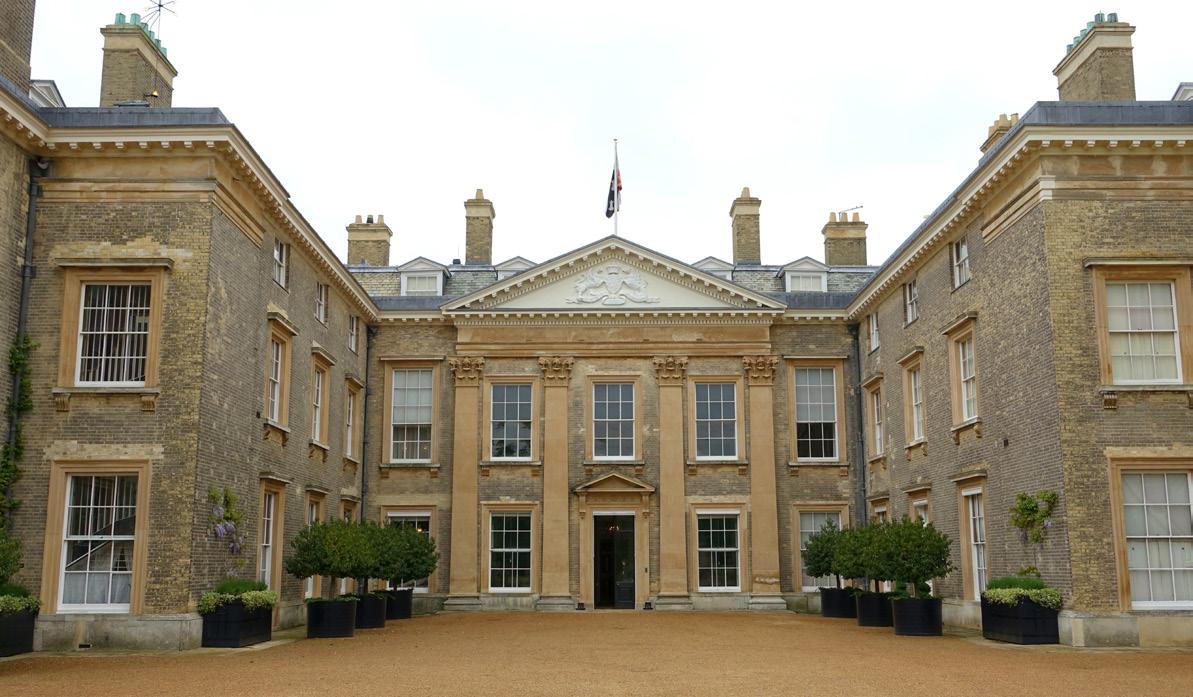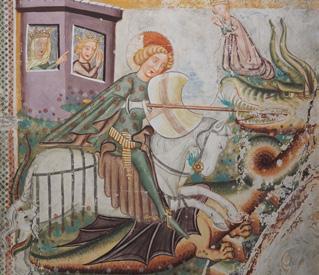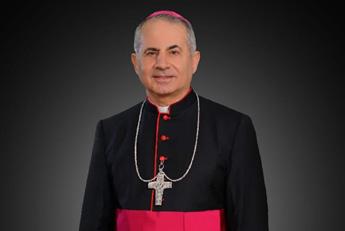
6 minute read
7
from Oremus April 2021
Two Plagues, Two Saints
Christopher Howse
John Henry Newman, now a saint, set Oxford, St Clement’s and Littlemore. But out from his home in the middle of his main calling was as a writer. Nor was Birmingham to look after the people he in good health himself in September of Bilston caught in the outbreak of 1849, having been laid low with a cholera in September 1849. It was only respiratory virus that made him deaf for 10 or 12 miles away from the poor three weeks. But, though his brother neighbourhood where Newman had set Oratorians feared he would lose his up the frst house of Oratorians earlier life, he had to go to Bilston ‘for charity’, that year, but there was much anxiety at he wrote in a letter. The community of his departure. ‘Everyone was crying as if Oratorians in London imitated this heroic we were going to be killed,’ he wrote in act of charity. They helped look after poor a letter a few days later. people at East Farleigh in Kent who had gone down into the country from London
There was no cure for cholera. It to pick hops. This traditional seasonal struck unpredictably and suddenly. labour usually had the air of a holiday, Louisa Caswall, the wife of Newman’s but then cholera struck. friend, the poet Edward Caswall, died after just 14 hours’ sickness while they Frederick William Faber, head of were staying at the healthy seaside town the London Oratory, went down to East of Torquay. Bilston, though, was not a Farleigh, with a fresh supply of oils healthy spot, but a poor, insanitary town for anointing the sick, and two other at the heart of the industrial Midlands, Oratorians were with him. They knew of and we now know that cholera is spread the emergency there through the Church by dirty water. of England vicar at East Farleigh, Henry Wilberforce, a son of William Wilberforce
Newman, then 48, had gone with the great campaigner against slavery. another priest of the Oratory, Ambrose St John, 34, to take the sacraments to Newman had tutored Henry sick Catholics at Bilston and minister Wilberforce at Oriel College, Oxford, to the dying. They were needed 20 years earlier. Now, in 1849, he was because two Catholic priests there had acutely aware that Wilberforce was on been overcome by exhaustion and sickness in their task. the brink of becoming a Catholic but was undecided while in grave danger of death from cholera. Even while he was
‘The sight of the sick in the hospitals about to go to Bilston, and in the days was terrible,’ Newman wrote in a letter Statue of Cardinal Newman for Oriel afterwards, Newman wrote repeatedly to to his sister Jemima. At night, the priests College, Oxford by Henry Alfred Pegram Wilberforce: ‘Do not let any thing stand would be called out, he explained, between conviction and its legitimate three or four times, having then to walk four, perhaps, or consequence’. Faber had told Newman of Wilberforce’s fear even seven miles to attend the seriously ill. One of the of catching the disease without having resolved his indecision, parish priests, Fr John Sherlock, had even carried the sick and Newman asked Faber in reply to be ‘very gentle’ with to hospital on his back. The people of Bilston remembered Wilberforce in his anxiety. As it turned out, Wilberforce did with gratitude the way that Catholic priests had ministered not catch cholera and the next year, with his wife, became to them in 1832 during an earlier outbreak of cholera. a Catholic. No sooner had Newman set to work at Bilston, ‘They say that two thirds of the population would become than the cholera subsided, and after a few days his place was Catholics if they had priests to take care of them,’ Newman taken by another Oratorian, while he was sent to recuperate at wrote just after his time there. Cotton in Staffordshire.
It was not his ordinary vocation. He had, it is true, Newman’s brave charity reminded me of a priest 200 become involved with the aid and education of the poor in years earlier, St John Southworth (1592-1654), whose body Birmingham, as he had been in previous years in poor parts of is venerated here in the Cathedral’s Chapel of St George and
the English Martyrs. He worked in the City of London and Westminster during the outbreak of bubonic plague in 1636, which was estimated to have killed 12,000, compared with the famous plague of 1665 that killed 68,000 in London.
Southworth found that, without paid work, and isolated in houses where others had died, many families had no food to eat. He brought them money collected from an appeal to the nation’s Catholics and at the same time the sacraments of the Eucharist, Penance and the Anointing of the Sick. He worked in co-operation with Fr Henry Morse, a trusted Jesuit missionary.
Things were hard enough with plague and poverty, but Southworth was also pursued by enemies who wanted him to be prosecuted for acting as a Catholic priest, which had been made illegal under Queen Elizabeth in the previous century.
Again and again, Southworth was imprisoned, in the Clink on the South Bank of the Thames, and in the Gatehouse at Westminster. He was freed more than once through the intercession of Henrietta Maria, wife of King Charles I, and continued his work. Henry Morse caught the plague but recovered, only to be executed for being a priest in 1645. Southworth was hanged, drawn and quartered after admitting his priesthood in 1654. They were both canonised in 1970.
As with John Southworth, John Henry Newman met hostility from many fgures in power who regarded Catholicism as a perversion of the Protestant religion established in England. In 1850 the restoration of Catholic bishops to territorial sees in England was labelled as a Papal Aggression. In 1850, the cholera of 1849 was forgotten, just as the plague of 1636 was forgotten in the English Civil War. Yet St John Henry Newman and St John Southworth became saints because they exercised God’s charity in sickness or in health. Christopher Howse is an assistant editor of The Daily Telegraph.
St John Southworth in St George’s Chapel
Companions of Oremus
We are very grateful for the support of the following:
Mrs Mary Barsh Dr Stuart Blackie Anne Veronica Bond Richard Bremer Ms Virginia Pinto Cassama Mrs Erlinda Chin Francis George Clark R & L Collyer-Hamlin Daniel Crowley Ms Georgina Enang Alfredo Fernandez Fred Gardiner Connie Gibbes
Theresa Giwa in memoriam
Zoe & Nick Goodway Rosalinda Grimaldo Mrs Valerie Hamblen Bernadette Hau Bernard Adrian Hayes Mrs Cliona Howell Alice M Jones & Jacob F Jones Poppy K Mary Thérèse Kelly Raymund Livesey
Alan Lloyd in memoriam
Barry Lock Clare and John Lusby Pamela McGrath Linda McHugh
Peter McNelly in memoriam
Christiana Thérèse Macarthy-Woods James Maple Dionne Marchetti Paul Marsden Mary Maxwell Abundia Toledo Munar Chris Stewart Munro Mrs Brigid Murphy Kate Nealon Cordelia Onodu Cris Ragonton Emel Rochat Berenice Roetheli Clementina Rokosu John Scanlan Mr Luke Simpson Sonja Soper Tessa and Ben Strickland Julia Sutherland Eileen Terry Mr Alex Walker Jacqueline Worth Patricia M Wright and of our anonymous Companions
If you would like to become a Companion of Oremus, see page 4










